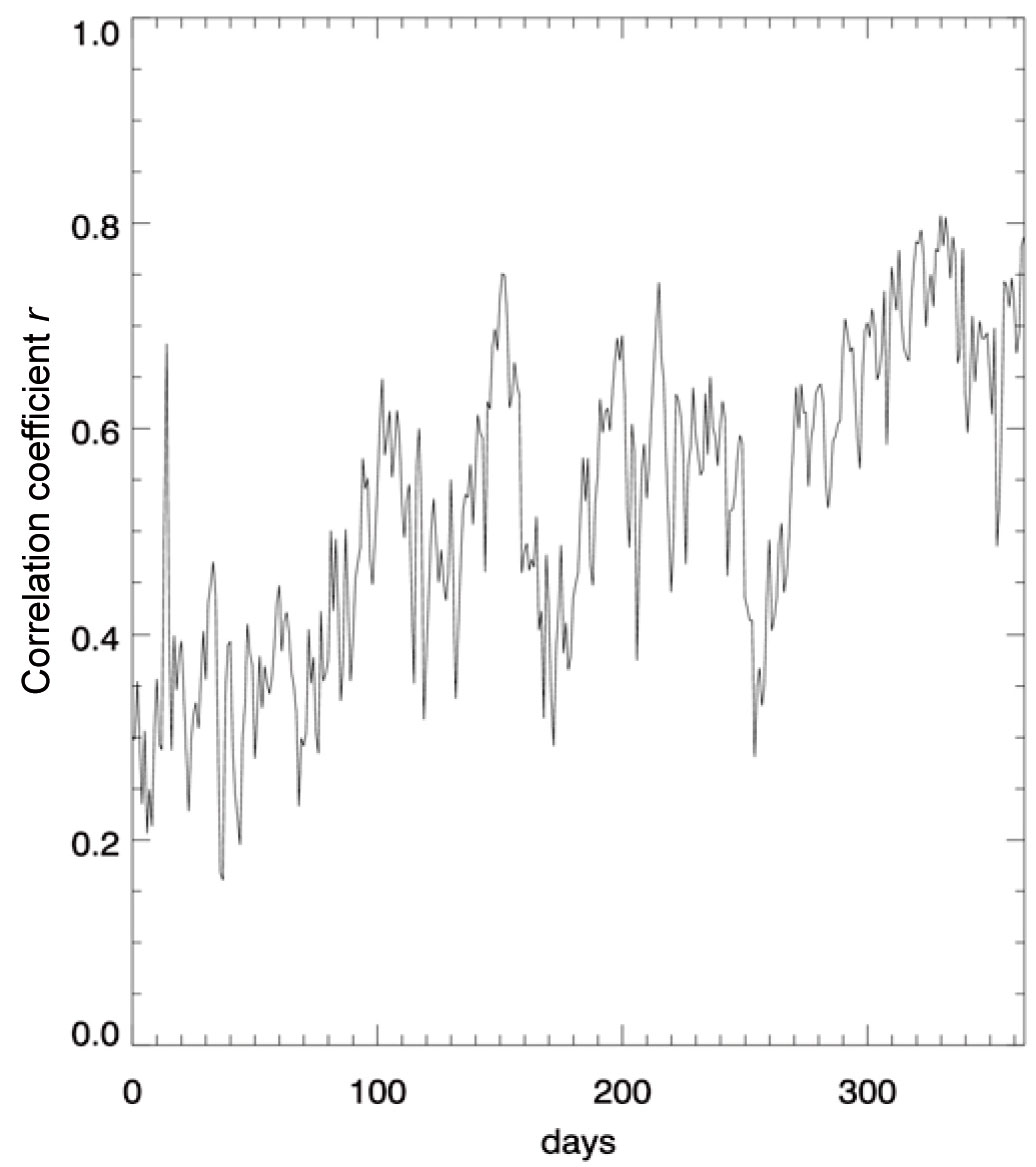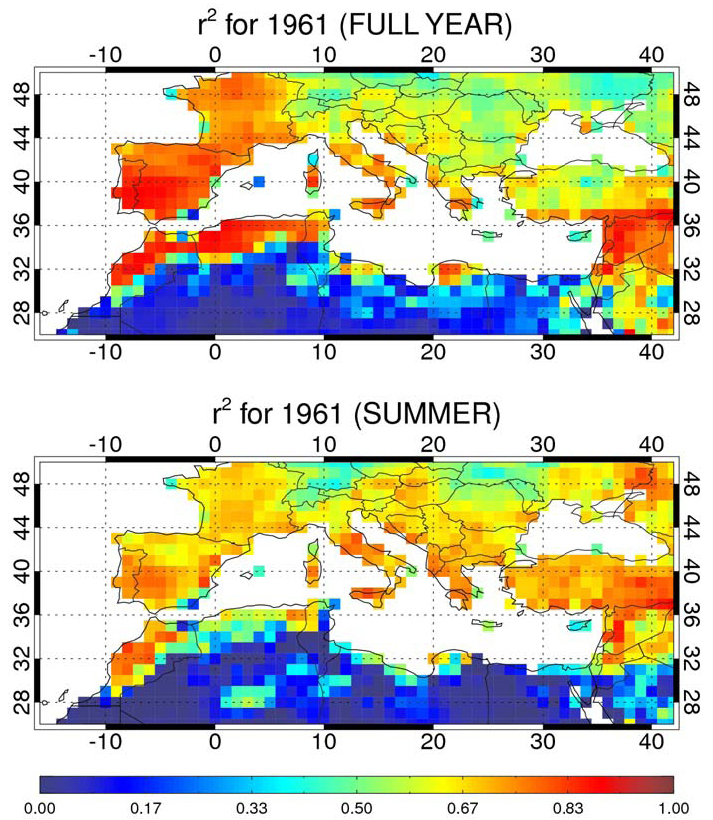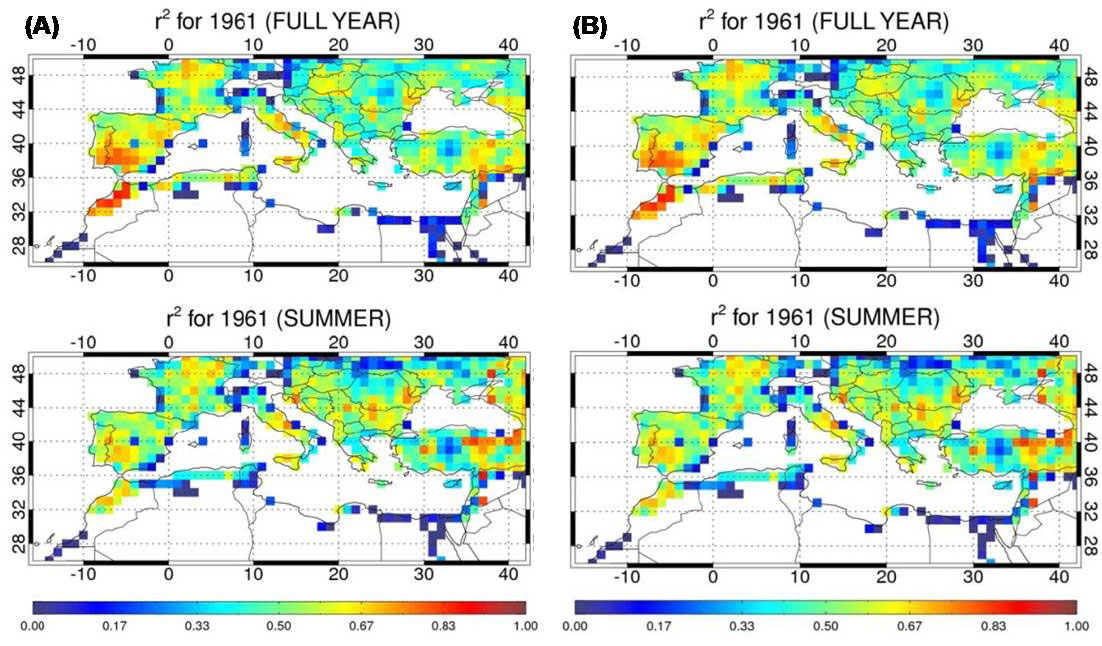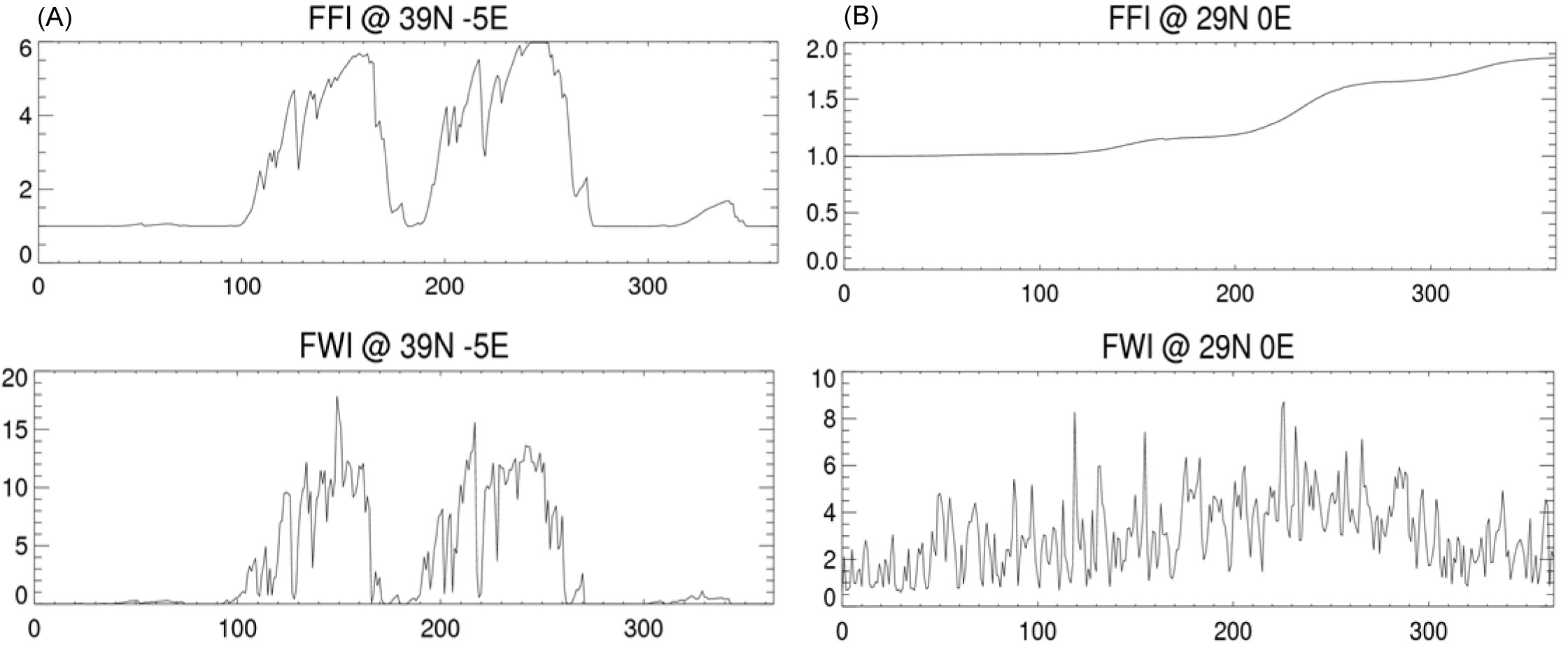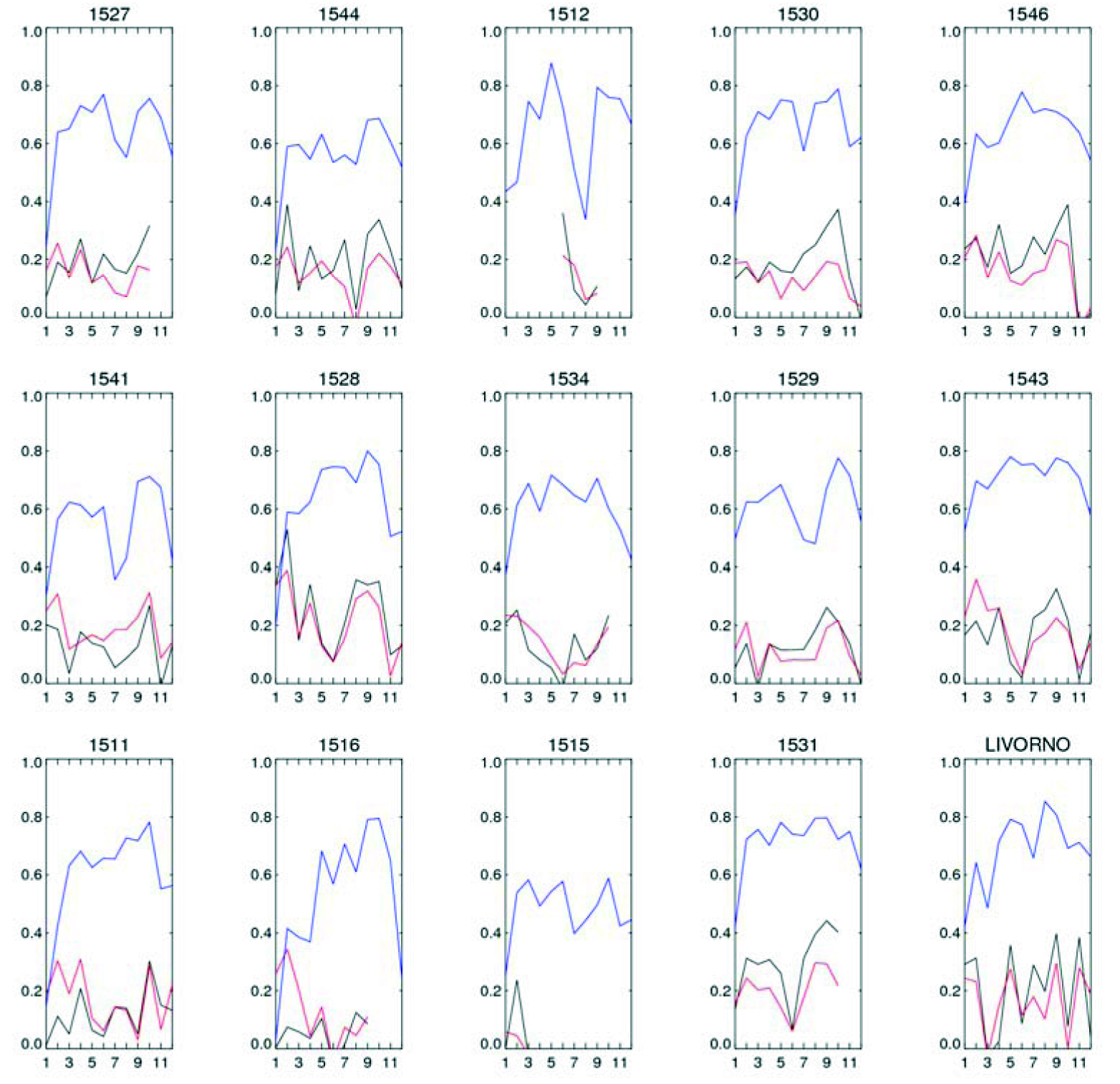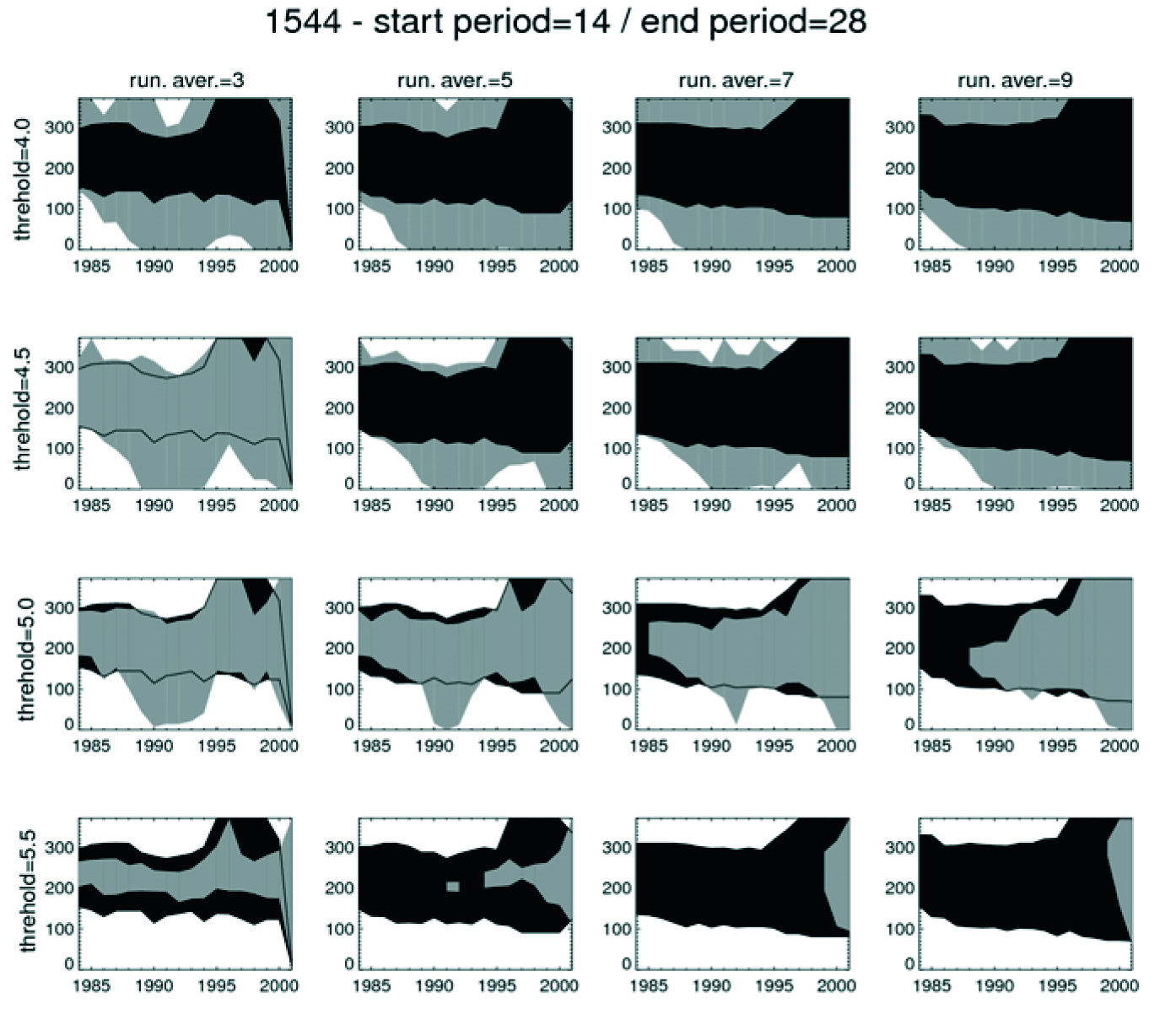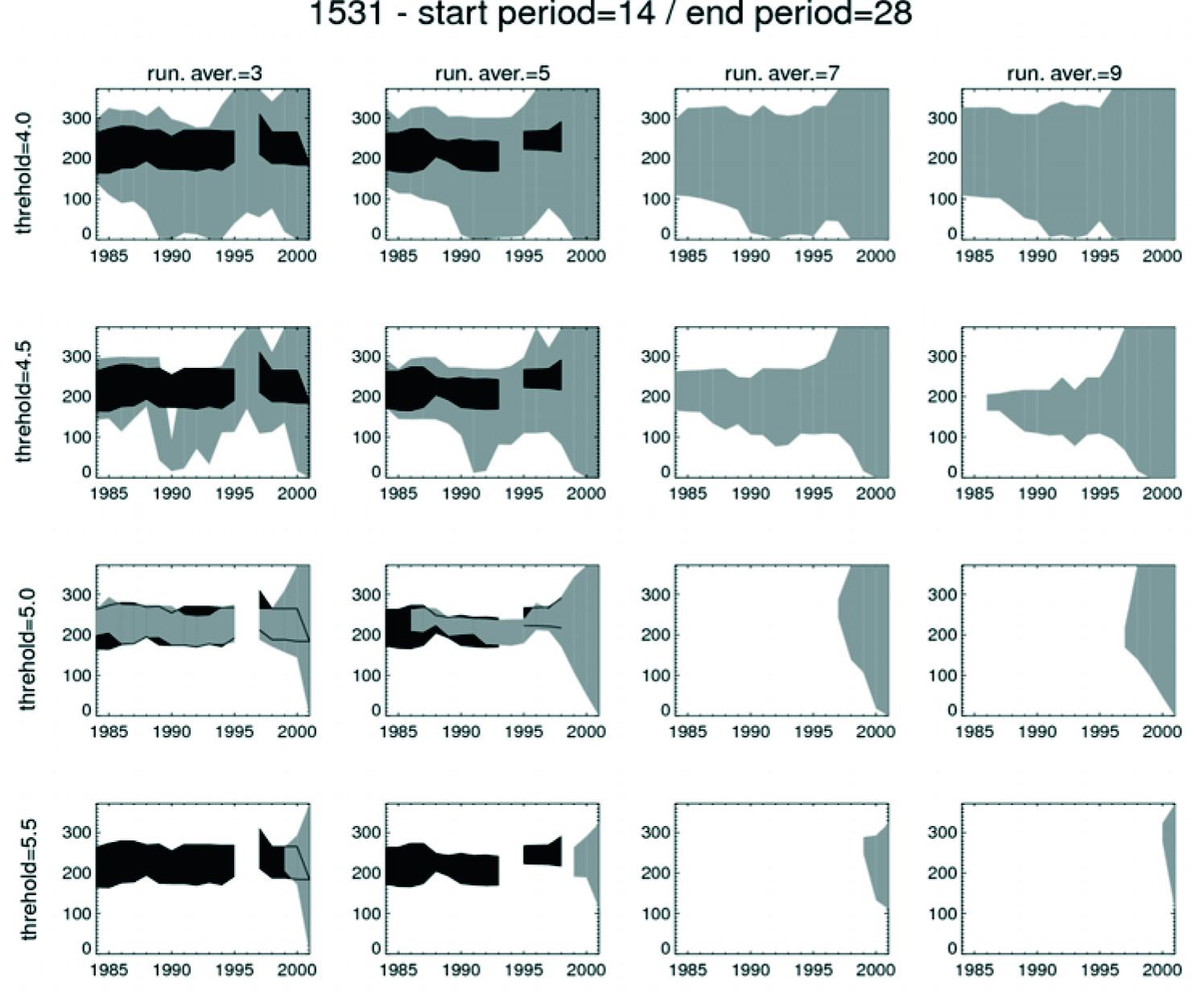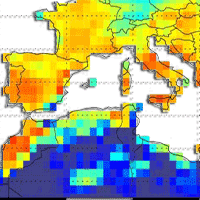
Comparison of fire danger indices in the Mediterranean for present day conditions
iForest - Biogeosciences and Forestry, Volume 5, Issue 4, Pages 197-203 (2012)
doi: https://doi.org/10.3832/ifor0622-005
Published: Aug 02, 2012 - Copyright © 2012 SISEF
Technical Reports
Abstract
This paper assesses the ability of two forest fire danger indices to estimate fire danger and to define the beginning and the end of fire season. Two indices are studied: the Canadian Fire Weather Index (FWI) and the Finnish Forest Fire Index (FFI). The indices are designed to meet the needs of particular regions but they have also proved to be suitable for the Mediterranean region. The aim of this study is to assess the skill performance of both indices and identify their strengths and weaknesses. The Canadian FWI depends on temperature, precipitation, relative humidity and wind measurements, while the Finnish FFI relies on potential evaporation and precipitation. Results indicate that, in general, FWI and FFI determine a fairly similar fire danger for a set of weather conditions. Higher correlations are found especially for locations under significant fire danger. The results improve for the lower values of fire danger if a spin up period is used in the computation of FFI. Both indices show similar features especially during summer, but some deviations are typical during early spring and autumn, as FWI probably overestimates the fire danger.
Keywords
Introduction
Several fire indices have been used to estimate forest fire danger. Their construction varies widely from one index to another, reflecting different underlying approaches. In addition, the reliability of an index may depend on the region where it is applied, since indices or their readings are usually fine tuned for specific regions of interest. In the present study, two indices are considered: the Canadian Fire Weather Index (FWI) and the Finnish Forest Fire Index (FFI). The Canadian FWI depends on temperature, precipitation, relative humidity and wind measurements, while the Finnish FFI relies on potential evaporation and precipitation.
In this work, the two above indices are compared through inter-correlation and their ability to define the beginning and the end of the fire season was assessed. The indices skills are evaluated over the Mediterranean region using real fire observations from Italy for the period 1984-2001. The performance of the indices is further estimated in boreal forest environments in Finland by Vajda et al. ([4]).
Brief description of the fire indices
The Canadian Fire Weather Index (FWI) is based on weather readings taken at noon standard time and rates fire danger at the mid afternoon peak from 2:00 - 4:00 pm. The meteorological variables required for its computation are:
- Air temperature (in the shade);
- Relative Humidity (in the shade);
- Wind speed (at 10 m above ground, averaged over at least 10 minutes);
- Rainfall (for the previous 24 hours);
The FWI System consists of six components: three fuel moisture codes (Fine Fuel Moisture Code, Duff Moisture Code, Drought Code) and three fire behaviour indices (Initial Spread index, Build Up Index, Fire Weather Index). Calculation of the index requires previous day records of the fuel moisture codes. FWI is divided into four fire danger classes:
- Low (0 - 7);
- Medium (8 - 16);
- High (17 - 31);
- Extreme (> 32).
The calculation of the Finnish Forest Fire Index (FFI) is based on surface moisture estimation of a 60 mm thick organic surface layer, consisting of litter, moss and humus ([4], [5]) and requires the following input:
- Potential evaporation from 24 hours centred on time of calculation;
- Accumulated precipitation for 24 hours.
Previous day records of the above are required to compute the index. From the beginning of winter until the date of complete melting of snow cover, the surface layer is assumed to be saturated and the volumetric moisture of the surface layer can be assumed to be 50%. The follow-up of soil surface moisture starts immediately after the snow has melted. Finally, the surface moisture is scaled to forest-fire index values that vary between 1 and 6. Based on the six fire danger classes we can define three fire danger levels:
- Low (1 - 4);
- Medium (4 - 5)
- High (> 5)
It is noteworthy that both indices reflect similar weather conditions, since a combination of relative humidity, temperature and wind records can determine evaporation rates ([3]). Both indices depend on previous day conditions regarding one or more of their components and they both define fire danger classes.
Results and Discussion
Correlation between fire indices in the Mediterranean
A subset of ERA-40 re-analysis meteorological data is used to compare FWI and FFI through correlation on a wide domain. The subset of data is centred over the Mediterranean region, on a 1° x 1° grid, and consists of 6-hourly data of temperature, precipitation, evaporation and wind for the year 1961. Daily values of the variables have been utilised to compute the fire indices. Relative humidity required for computing FWI is estimated by the Romanenko equation as suggested by Singh & Xu ([3]). No snow coverage has been considered when computing FFI. In all following correlations, the sea locations have been neglected.
Considering all locations and all days, the average correlation coefficient (Pearson’s r) between FFI and FWI equals 0.75, reflecting high correlation between the two indices. Fig. 1 shows the daily correlations between the two indices for the entire region. The noticeable positive trend might be due to differences in the spin up applied to index computation (one year for FWI, none for FFI), and suggest a biased lowered correlations for the first 100 days of the year. Preliminary investigation showed no dependence of FFI on the spin up period, but further analysis is needed to confirm this statement. Moreover, the particularly low fire danger in winter possibly makes the correlation unreliable.
Fig. 1 - Variation along the year 1961 (horizontal axis) of the daily Pearson’s product-moment correlation coefficients (r) between FWI and FFI for the Mediterranean region.
To get a clearer picture, a spatial analysis was also performed. Fig. 2 shows the local ratio of correlation coefficients (FFI/FWI) for two time periods: full year and summer. Correlation decreases where there is no fire danger, and increases in regions already known for fire occurrences. This is particularly evident in Fig. 3, which shows the local r between danger classes derived from both indices. Correlation is undefined in areas with no fire danger all year around, and no colour shading is displayed.
Fig. 2 - Correlation coefficients between time series of FFI and FWI at each location of the data set. Top: full year; bottom: summer.
Fig. 3 - Correlation coefficients between the danger classes derived from time series of from FFI (A) and FWI (B) at each location of the data set. Correlation is undefined in areas with no fire danger all over the year (no colour shading displayed).
Fig. 4 shows the time series at two different locations, one with and one without fire danger. The time series of the indices in the first diagram (Fig. 4a) are characterized by similar behaviours as opposed to those displayed in the second diagram (Fig. 4b), suggesting that, in cases with very low fire danger, a spin up may be needed when computing FFI. These findings confirm that regions (or time period) with low fire danger show low correlation (if any) between FWI and FFI. The even lower correlation might be attributed to the lack of a spin up period within the computation of FFI.
Comparison of fire indices against observations
In this section, regional fire observations (burnt areas, number of fires) from 15 Italian stations (Fig. 5) are compared with fire indices derived from meteorological observations at the same locations. Data are available for the period 1984-2001.
Monthly correlations were estimated between real data and the fire indices and presented in Fig. 6., where blue lines represent the correlation between the two indices. These results provide further evidence to support the findings from previous section. Note that a spin up period is automatically applied to FFI, since more than one year of data is available. The trend detected in Fig. 1 is not shown in the diagrams of Fig. 6. The black/red lines represent the correlation between FWI/FFI with the number of fires. As expected, the correlation coefficients are rather low, indicating the large levels of uncertainty involved in fire predictions. None of the indices performs particularly well at predicting fire events, since high fire danger is not always associated with fire occurrence. External factors, such as human behaviour (land use policy, fire suppression strategy, etc.) are not taken into account in the indices computation. Fig. 7 shows that areas burnt and fire indices are not correlated in any year.
Fig. 6 - Monthly correlations between number of fires and fire indices (FWI: black lines; FFI: red lines) and between the two fire indices (blue lines) for each of the 15 Italian stations.
Fig. 7 - Annual correlations between areas burnt and fire indices (FWI: black lines; FFI: red lines) and between the two fire indices (blue lines) for each available year.
Fire indices comparison: determining fire seasons
The ability of both the above indices to define fire seasons was assessed based on the Italian dataset. According to Good et al. ([1]) and Moriondo et al. ([2]), defining fire seasons with FWI is more robust than with temperature and allows avoiding false alarm. The method consists of:
- Calculation of 7-day running averages to smooth daily variability;
- Use FWI=15 as threshold for beginning and end of the season;
- Defining the beginning of fire season as 2 consecutive weeks with FWI>15 (start-period);
- Defining the end of fire season as 4 consecutive weeks with FWI<15 (end-period).
The four parameters (threshold, running average period, start- and end-period) were further analysed, so as to become applicable for use with FFI as well. Fig. 8 provides the fire seasons according to both indices at station coded 1544, and for a set of season parameters. The y-axis represents day numbers. A threshold between 4.5 and 5 for FFI gives results similar to FWI (as expected by the danger classes). A running average period between 5 and 7 days seems to be more reliable. Under these conditions, the FFI-derived season begins too early in the early 90’s and around 2000. Both indices determine the end of the season at the end of the year 1996. This is definitively too late, and the period used to define the end of the season may need to be shorter.
Fig. 8 - Fire seasons according to FWI (black) and FFI (grey) for location code 1544. In all cases, start- and end-periods are 14 and 28 days respectively. In each column, a different running average period is applied to both FWI and FFI. In each row, a different threshold for FFI is used to define the fire period (it is fixed to 15 for FWI).
Fig. 9 shows the fire season at a different station, where FFI performs better than FWI in the definition of a fire season. FWI cannot identify any fire season during the period 1993-1995. On the other hand, the fire season around 2000 is too long with FFI (the full year), something that FWI does not show. Additional investigation is needed to understand the reasons for such differences in this station. The dependence on location calls for a systematic analysis of fire season using larger datasets such as the ERA-40 reanalysis data.
Fig. 9 - As in Fig. 8, but the results for location coded 1531 are presented here.
An extensive evaluation of the performance of Finnish Forest Fire Index (FFI) and the Canadian Fire Weather Index (FWI) in boreal forest conditions is provided by Vajda et al. ([4]). They examined how the two indices can predict the probability of fire ignition and capability of fire propagation by comparing those with different meteorological variables and observed fire activity.
Conclusions and future plans
In general, FWI and FFI determine a fairly similar fire danger for a set of weather readings (r approx. 0.7). Higher correlations are found especially for locations under significant fire danger. The correlation increase for lower values of fire danger if a spin up period is used in the computation of FFI. Similar results were obtained for a boreal forest environment. Both indices show similar features especially during summer, but some deviations are typical during early spring and autumn, as FWI probably overestimates the fire danger. The comparison with meteorological parameters revealed a quick response of this index to environmental changes, especially to rainfall events.
It has to be remarked here that fire indices do not represent fire predictors, though they can be used to define the fire season as an advanced alternative to temperature-based predictions. It is found that fire-season determination based on indices is satisfactory, although fine-tuning is needed in time and space. Namely, cautious adjustment of the start and end periods is required. Neither FFI nor FWI provided a robust definition at any location. Hence, a systematic study using ERA-40 data is planned to be carried out in future study, where FFI, FWI, and particularly their components will be investigated in relation to weather data.
Acknowledgements
This work was initiated during the course of EU project ENSEMBLES (⇒ http://www.ensembles-eu.org) and completed during EU project CLIMRUN (⇒ http://www.climrun.eu). Financial support from these projects is greatly acknowledged.
Furthermore, the authors would like to sincerely thank A. Venäläinen and A. Vadja of the Finnish Meteorological Institute for providing the FFI code and useful advices for its use.
References
Gscholar
Gscholar
Authors’ Info
Authors’ Affiliation
A Karali
M Hatzaki
Institute for Environmental Research and Sustainable Development, National Observatory of Athens, I. Metaxa & V. Pavlou, GR-15236 Palaia Pendeli, Athens (Greece)
Chemistry and Climate Division, Royal Netherlands Meteorological Institute- KNMI, Wilhelminalaan 10, NL-3732 GK De Bilt (The Netherlands)
Institute of Biometeorology of Florence, National Research Council, v. Caproni 8, I-50145 Florence (Italy)
DiPSA-Department of Plant, Soil and Environmental Science, University of Florence, p.le delle Cascine 18, I-50144 Florence (Italy)
Department of Geography, University of the Aegean, University Hill, GR-81100 Mytilene (Greece)
Corresponding author
Paper Info
Citation
Giannakopoulos C, LeSager P, Moriondo M, Bindi M, Karali A, Hatzaki M, Kostopoulou E (2012). Comparison of fire danger indices in the Mediterranean for present day conditions. iForest 5: 197-203. - doi: 10.3832/ifor0622-005
Academic Editor
Agostino Ferrara
Paper history
Received: Jan 25, 2012
Accepted: Jun 19, 2012
First online: Aug 02, 2012
Publication Date: Aug 29, 2012
Publication Time: 1.47 months
Copyright Information
© SISEF - The Italian Society of Silviculture and Forest Ecology 2012
Open Access
This article is distributed under the terms of the Creative Commons Attribution-Non Commercial 4.0 International (https://creativecommons.org/licenses/by-nc/4.0/), which permits unrestricted use, distribution, and reproduction in any medium, provided you give appropriate credit to the original author(s) and the source, provide a link to the Creative Commons license, and indicate if changes were made.
Web Metrics
Breakdown by View Type
Article Usage
Total Article Views: 55376
(from publication date up to now)
Breakdown by View Type
HTML Page Views: 45942
Abstract Page Views: 3585
PDF Downloads: 4424
Citation/Reference Downloads: 26
XML Downloads: 1399
Web Metrics
Days since publication: 4883
Overall contacts: 55376
Avg. contacts per week: 79.38
Article Citations
Article citations are based on data periodically collected from the Clarivate Web of Science web site
(last update: Mar 2025)
Total number of cites (since 2012): 13
Average cites per year: 0.93
Publication Metrics
by Dimensions ©
Articles citing this article
List of the papers citing this article based on CrossRef Cited-by.
Related Contents
iForest Similar Articles
Research Articles
Assessing the performance of fire danger indexes in a Mediterranean area
vol. 11, pp. 563-571 (online: 01 September 2018)
Research Articles
Modeling human-caused forest fire ignition for assessing forest fire danger in Austria
vol. 6, pp. 315-325 (online: 16 July 2013)
Review Papers
Monitoring the effects of air pollution on forest condition in Europe: is crown defoliation an adequate indicator?
vol. 3, pp. 86-88 (online: 15 July 2010)
Research Articles
Multiple ways for enhancing flammability in Mediterranean woody species: a trait-based approach
vol. 18, pp. 301-308 (online: 20 October 2025)
Technical Reports
Air pollution regulations in Turkey and harmonization with the EU legislation
vol. 4, pp. 181-185 (online: 11 August 2011)
Research Articles
Dust collection potential and air pollution tolerance indices in some young plant species in arid regions of Iran
vol. 12, pp. 558-564 (online: 17 December 2019)
Research Articles
Probabilistic prediction of daily fire occurrence in the Mediterranean with readily available spatio-temporal data
vol. 10, pp. 32-40 (online: 06 October 2016)
Editorials
COST Action FP0903: “Research, monitoring and modelling in the study of climate change and air pollution impacts on forest ecosystems”
vol. 4, pp. 160-161 (online: 11 August 2011)
Research Articles
Post-fire recovery of the plant community in Pinus brutia forests: active vs. indirect restoration techniques after salvage logging
vol. 11, pp. 635-642 (online: 04 October 2018)
Research Articles
Responses of European forest ecosystems to 21st century climate: assessing changes in interannual variability and fire intensity
vol. 4, pp. 82-99 (online: 05 April 2011)
iForest Database Search
Search By Author
Search By Keyword
Google Scholar Search
Citing Articles
Search By Author
Search By Keywords
PubMed Search
Search By Author
Search By Keyword

